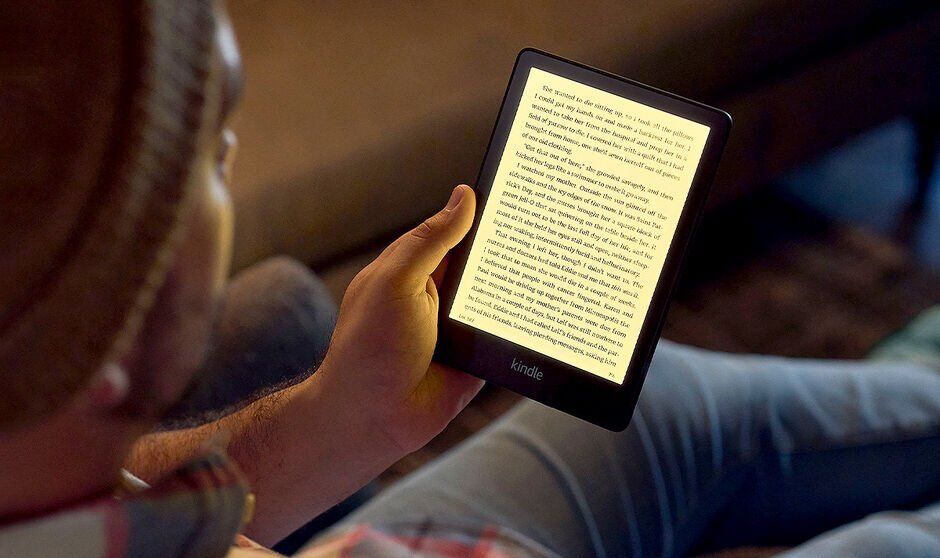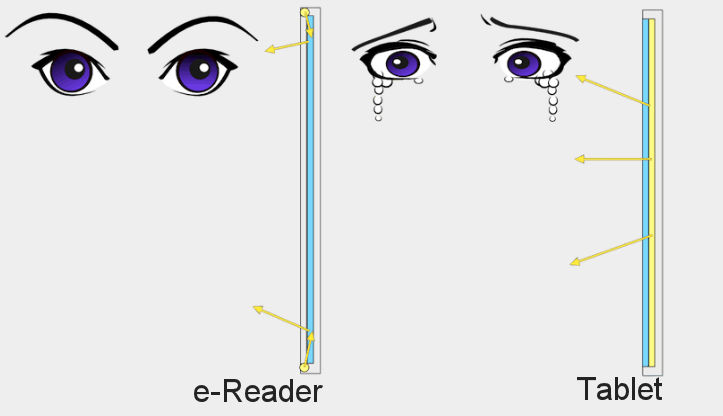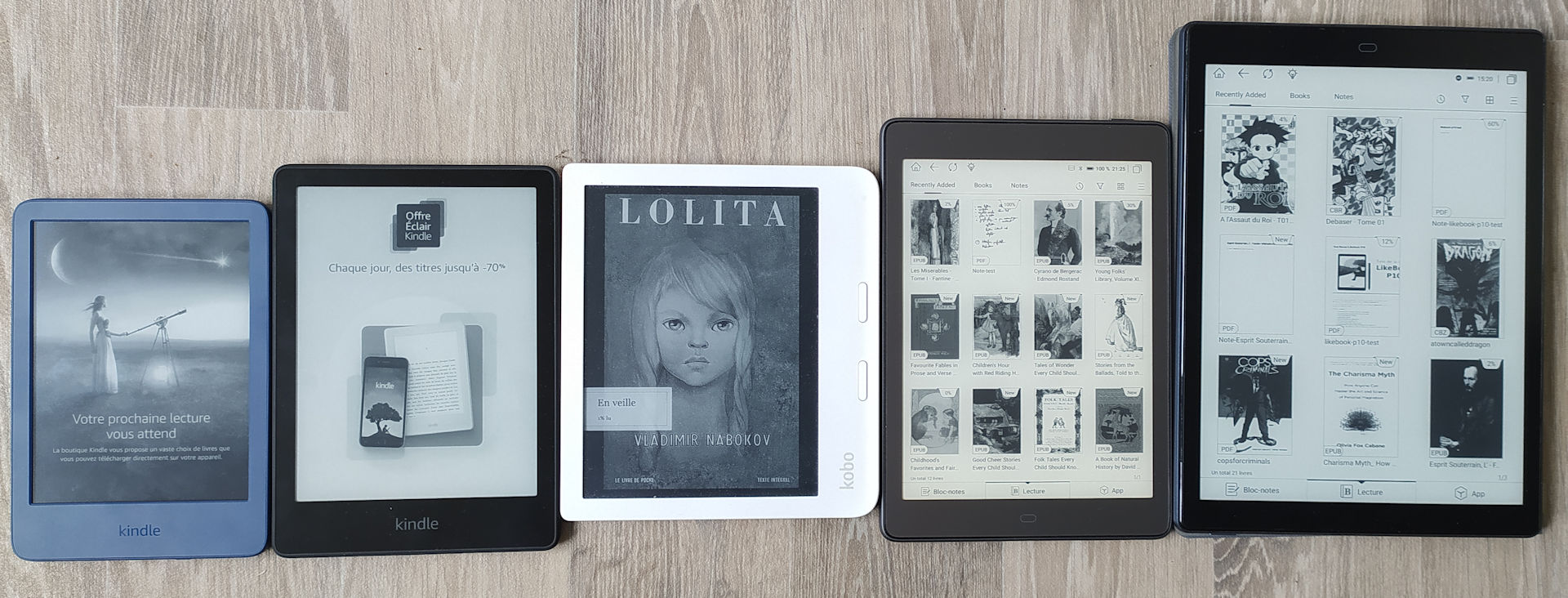
E-readers use a special type of screen known as electronic ink. Unlike the screens used on smartphones, tablets and PCs, e-ink is based on a completely different technological approach, enabling a paper-like display.
In this article, we'll look at how does e ink works, and its advantages and disadvantages compared with other screen technologies.
What is electronic ink (e ink)?
Electronic ink is the name given to a technology that enables characters and illustrations to be displayed on a surface, with the aim of closely resembling a paper print.
Electronic ink is also known as "electronic paper", "electronic ink", "e ink" or "e paper".
As with paper printing, e-ink does not require lighting to operate. The surface of electronic ink is reflective in the sense that it is sunlight (or an artificial light source) reflected from the screen that enables us to see what is displayed.
E-ink can be used on a variety of surfaces, but is mainly used on a plastic surface, which can be rigid or flexible.
Today, the main manufacturer of screens using electronic ink is the Asian company E-Ink Holding, more often referred to as "E-Ink" or "e ink".
Today, electronic ink displays are used in e-readers, watches, display panels, smartphones, tablets and computer screens.
Who invented e ink?
E-ink was invented in 1997 by MIT researcher JD Albert.
It was at MIT, in 1997, that JD Albert discovered how to make an electronic ink display.
At the time, he hadn't yet imagined the e-reader as we know it. But what he had in mind was far more impressive: a book made up of e-ink pages that could be flipped through!
In retrospect, it sounds complicated, but that's what JD Albert was trying to achieve at the time, as Albert explains in an interview:
"Often, when working on a new technology, it helps to set bold goals."
So, even if the vision of a multi-screen device with pages that can be turned has not come to fruition, e-ink is the main technology that drives all e-readers.
How does e ink work?
Electronic ink is made up of sphere-like microcapsules. These capsules are sandwiched between two plastic plates (rigid or flexible).
Inside each sphere are oil and small particles that are electrically charged.
A particle can be negatively charged (giving it the color black) or positively charged (giving it the color white).
When a negative electric current is applied to a capsule, the white particles are placed at one end of the capsule, while the black particles are placed at the other. This is the process that enables the display to switch from black to white.

To obtain different shades of gray, a more or less intense electric current is applied: 100% white; 75% white and 25% black; 50% white, 50% black; 25% white, 75% black and 100% black.
Once the electric current has been applied, the particles remain in place. This means that the e ink does not need to be supplied with energy once the text and images have been printed.
An e-ink screen is therefore made up of millions of capsules.
This technology is also known as "electrophoretic display".
Color e ink displays are produced on the same basis as monochrome electrophoretic displays.
The color comes from a filter that is added on top of the screen and the millions of capsules.
This filter is actually a matrix of filters that enables the display of 4096 colors.
Today, there are a number of different color e-ink screen technologies: Spectra, Gallery 3 and Kaleido (Kaleido 3 being the main ones.
How does the lighting work on e ink screens?
E-ink screens don't need a backlight source to function.
However, ereader manufacturers have chosen to include a light source to facilitate reading in dark environments. A light source also provides greater contrast on the screen.
E-ink screen lighting uses LEDs placed all around the screen.
Unlike LED, LCD or OLED screens, which use a lighting system placed beneath the screen, the light produced by the illumination of an e-ink screen does not strike the user's retina directly, as you can see from the following diagram:

The brightness of the lighting on e-ink screens can be adjusted, and manufacturers have also integrated a system for adjusting the lighting color temperature to act as a blue-light filter.
What are the advantages of e-ink?

Electronic ink is visually close to a paper print. Displays using this technology are therefore suitable for reading text.
Once e ink printing has been carried out, there is no need to supply power to the screen, which retains its display.
On the other hand, an electric current is required for each change made to the screen. As a result, e-ink screens consume very little energy. As a result, devices using them have longer battery life than those using more conventional screen technology.
What are the disadvantages of e-ink?
Although e-ink is very energy-efficient, it has the disadvantage of being slower than other display technologies. Refreshing an e-ink screen is therefore slower.
While technological advances have greatly improved this point, e-ink is still too slow to display video in good conditions.
The other major shortcoming is color display. Color rendering is well below that of LED, LCD or OLED screens.
Finally, these screens are more expensive to manufacture. The price of large diagonal screens (8 inches and over) is therefore very high compared with competing display technologies.
Here are a few links to find out more:






